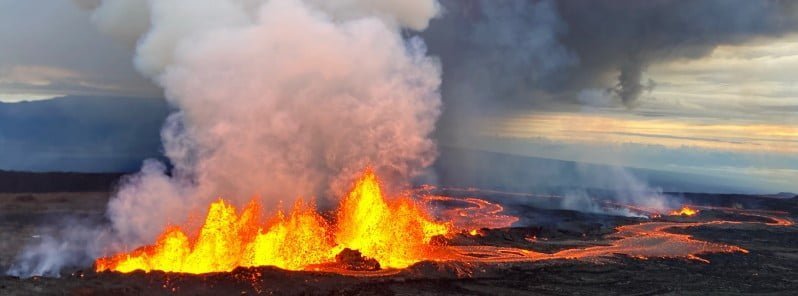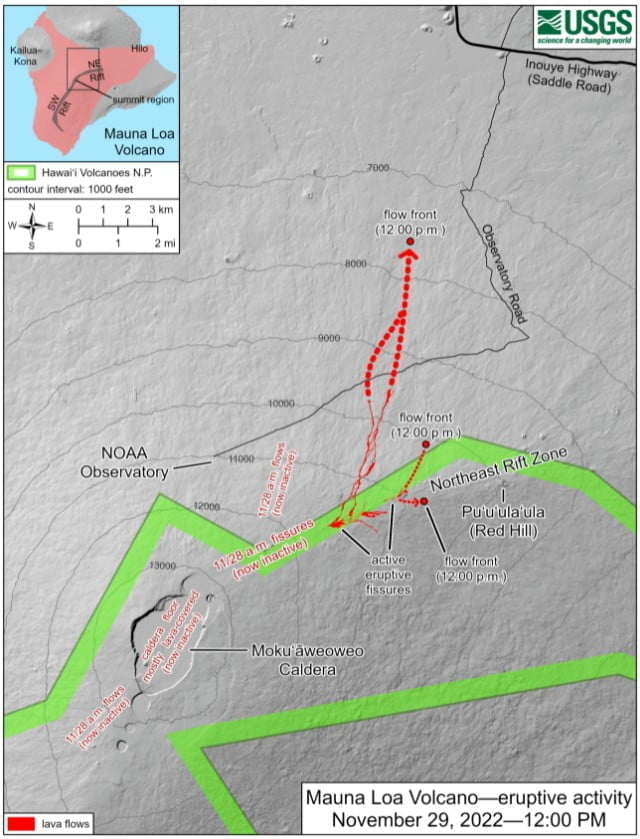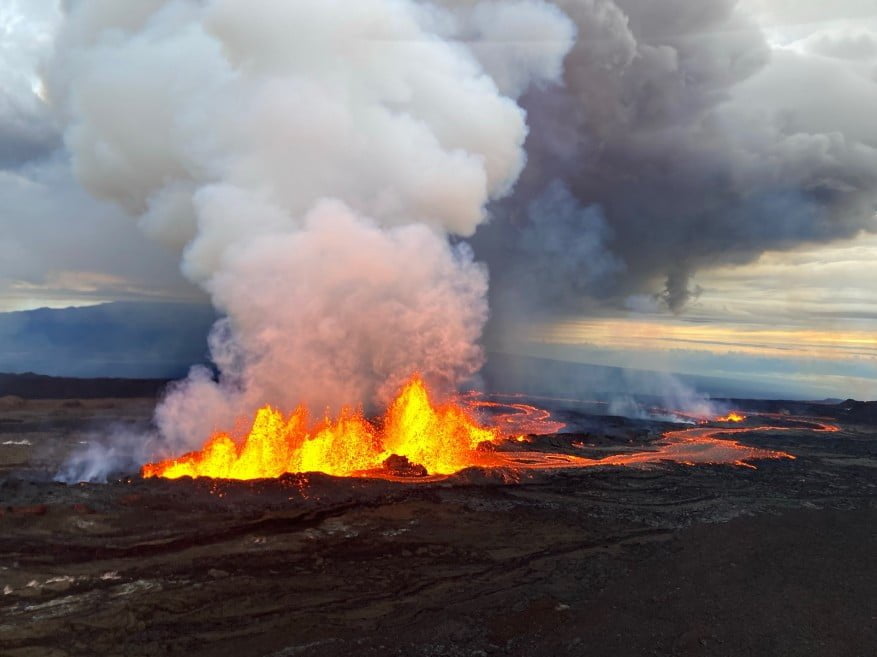Mauna Loa eruption – Lava flow crosses Mauna Loa Weather Observatory Road

The eruption of Mauna Loa volcano that started on November 28, 2022, in its Northeast Rift Zone continues, with several fissures and lava flows active.
The longest and largest lava flow is issuing from fissure 3. This lava flow crossed the Mauna Loa Weather Observatory Road at approximately 06:00 UTC on November 29, and the flow front was located approximately 7.5 km (4.5 miles) from Saddle Road at approximately 01:30 UTC.
Lava fountains at fissure 3 were consistently 40 – 50 m (131 – 164 feet) tall yesterday while those at fissure 4, which formed at approximately 05:30 UTC on November 28, were 5 – 10 m (16 – 33 feet) tall.


Sulfur dioxide (SO2) emission rates of approximately 250 000 tonnes per day (t/d) were measured on November 28, 2022.
There is no active lava within Moku’āweoweo caldera, and there is no lava erupting from the Southwest Rift Zone, the Hawaiian Volcano Observatory (HVO) said.1
“We do not expect any eruptive activity outside the Northeast Rift Zone and there is currently no property at risk.
“There is a visible gas plume from the erupting fissure fountains and lava flows, with the plume primarily being blown to the North.”
Geological summary
Massive Mauna Loa shield volcano rises almost 9 km (5.6 miles) above the sea floor to form the world’s largest active volcano.
Flank eruptions are predominately from the lengthy NE and SW rift zones, and the summit is cut by the Mokuaweoweo caldera, which sits within an older and larger 6 x 8 km (3.7 x 5 miles) caldera.
Two of the youngest large debris avalanches documented in Hawaii traveled nearly 100 km from Mauna Loa; the second of the Alika avalanches was emplaced about 105 000 years ago (Moore et al. 1989).
Almost 90% of the surface of the basaltic shield volcano is covered by lavas less than 4 000 years old (Lockwood and Lipman, 1987).
During a 750-year eruptive period beginning about 1500 years ago, a series of voluminous overflows from a summit lava lake covered about one-fourth of the volcano’s surface.
The ensuing 750-year period, from shortly after the formation of the Mokuaweoweo caldera until the present, saw an additional quarter of the volcano covered with lava flows predominately from the summit and NW rift zone vents.
This volcano is located within the Hawaiian Islands, a UNESCO World Heritage property.2
References:
1 HVO/USGS Volcanic Activity Notice for Mauna Loa – HVO – November 30, 2022 at 02:23 UTC
2 Mauna Loa – Geological summary – GVP
Featured image credit: HVO

Commenting rules and guidelines
We value the thoughts and opinions of our readers and welcome healthy discussions on our website. In order to maintain a respectful and positive community, we ask that all commenters follow these rules.